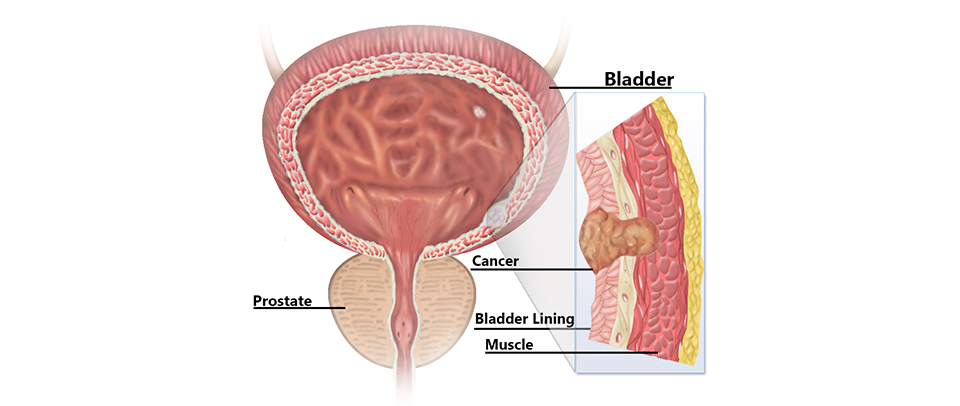Introduction

The bladder is the hollow organ in the lower abdomen of the pelvis that collects urine from the kidneys. The ureter connects the kidney and bladder. Cancer occurs in the bladder only when the healthy cells in it undergo the dangerous or degenerative changes that cause abnormal growth. Bladder cancer is quite common these days in the United States, affecting more than 68,000 adults each year. Bladder cancer is seen mostly in men. Bladder cancer begins in the urothelial cells in the bladder. Common symptoms of the Bladder Cancer include:
- Painful urination
- Blood in urine
- Pelvic pain
What Are the Types of Bladder Cancer?
Urothelial carcinoma – Urothelial carcinoma, also called as Transitional Cell Carcinoma which mainly occurs in the cells in the bladder. When the bladder is empty, the urothelial cells will contract and expand when the bladder is full. Tumors could be seen in these cells line in the urethra and ureters.
Squamous cell carcinoma – Squamous cell carcinoma cancer is characterized by the irritation in the chronic region of bladder. The infection could be formed if there is long-term use of the urinary catheter. Parasitic infection such as schistosomiasis is the common cause of this bladder infection. Squamous cell cancers are cells that form due to bladder inflammation. Cancer cells grows in the masses, also with interconnected cells.
Adenocarcinoma – The Adenocarcinoma affects the mucus-secreting gland in the bladder, and it is a rare form of infection. Glands have specialized structures mainly producing and releasing the fluids called mucus.

